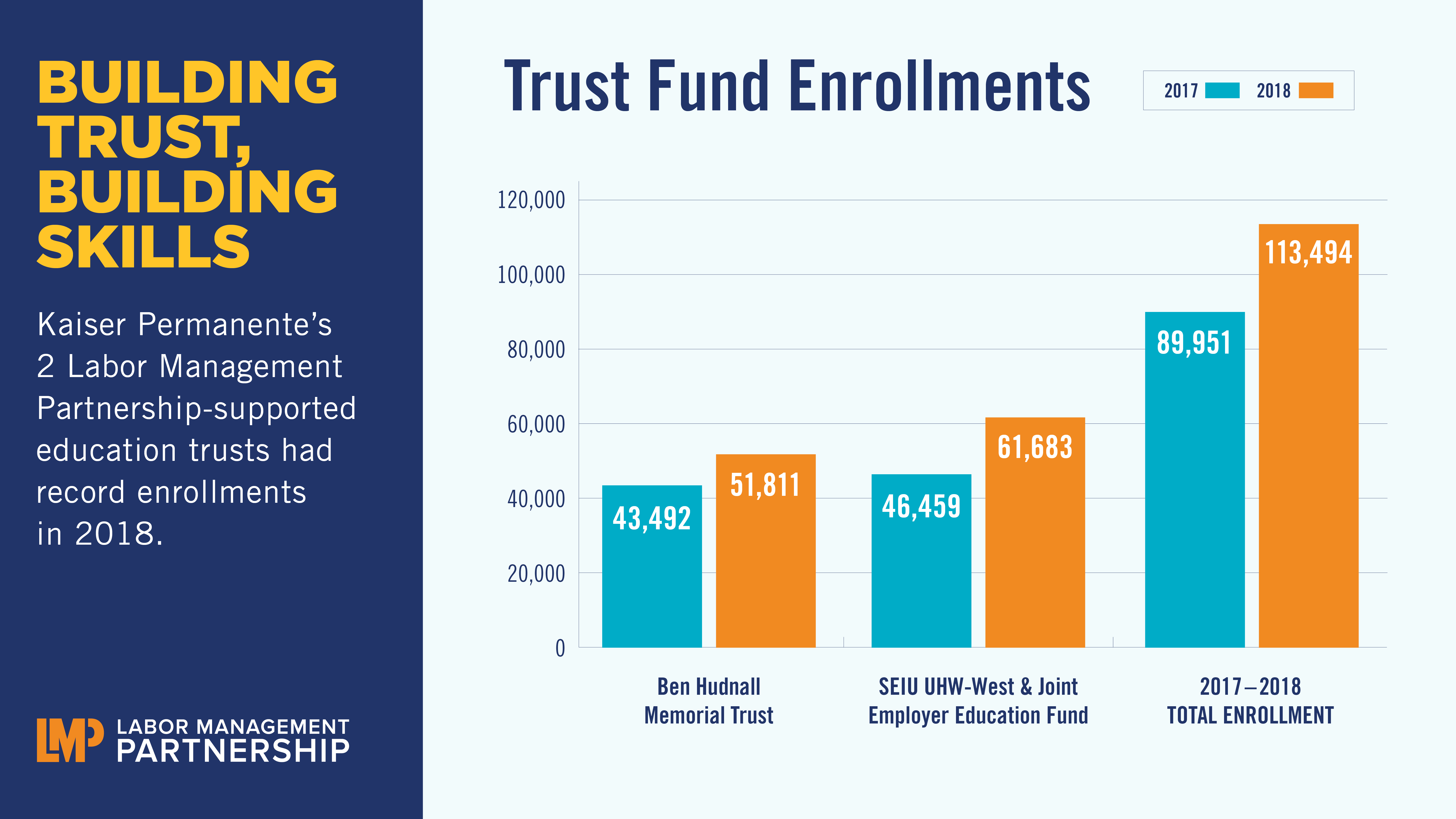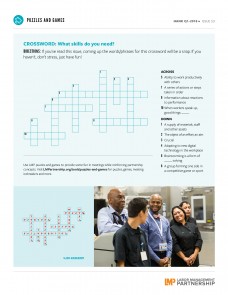Deck
Kaiser Permanente employees use education trusts in record numbers
For Jennifer Cuevo, an urgent care nurse in Pasadena, the opportunity was too good to pass up: Earn a Bachelor of Science in Nursing without paying fees.
For Joel Boyd, manager of pulmonary clinical services in South Sacramento, teaming with a trust fund created an opportunity to teach nearly 500 respiratory therapists ways to improve care and lower costs.
From earning degrees to learning best practices, Kaiser Permanente employees are using the 2 Labor Management Partnership-supported education trusts (Ben Hudnall Memorial Trust and SEIU UHW-West & Joint Employer Education Fund) in record numbers. Program enrollments rose 26% in 2018 to 113,494; there were nearly 59,000 enrollments in the first half of 2019, on pace for another record year.
“We can address solutions,” says Rebecca Hanson, SEIU Education Fund executive director. “There’s overwhelming demand among the workforce for training opportunities aligned with patient care delivery needs.”
Through the trusts, employees can build skills, meet targeted needs in training programs, and work with career counselors to set career goals and create plans to achieve them.
“We’re preparing our workforce for the jobs of tomorrow,” says Jessica Butz, Ben Hudnall trust co-director.
Going for it
Cuevo, a 16-year Kaiser Permanente employee and UNAC/UHCP member, started as a licensed vocational nurse, then became a registered nurse. She always wanted a bachelor’s degree but put her dreams on hold while raising her children — until she talked with a Ben Hudnall career counselor and learned good news.
With a few additional courses, Cuevo could qualify for a bachelor’s program. The trust would pay the fees.
“I’m so thankful,” Cuevo says. “I wouldn’t have done this without the help of the trust and the partnership of Kaiser with the universities.”
Most classes were online, which Cuevo took at home. She did in-person requirements on days off — coordinating with her manager and family — completing her degree in 4 semesters. Her 17-year-old daughter is “really inspired,” Cuevo says. “She wants to go into research or be a doctor.”
Cuevo’s inspired, too. In November, she started a master’s program – paid again by Ben Hudnall. Cuevo, who wants to teach nurses, encourages colleagues to use trust services.
“Go for it,” she says. “It’s so worth it. Get your degree. Move up. You can do it. I did it. I love it.”
Benefits of partnership
When Boyd and pulmonary clinical services colleagues in Northern California reviewed their operations, they saw a need to standardize some patient care practices. Their goal: to decrease the length of stay for patients on mechanical ventilation to reduce the risk of such complications as pneumonia, improve care and lower costs.
They partnered with the SEIU Education Fund to organize 8 group trainings for respiratory therapists at Kaiser Permanente’s Garfield Innovation Center.
Working with the education fund was easy and helped get employee buy-in and participation, Boyd said. The trainings were so effective, more may be offered in Northern California and other regions.
“Nothing at this scale has ever been done for respiratory therapists,” Boyd says. “It was a true example of how we can get positive benefits from the Partnership.”


